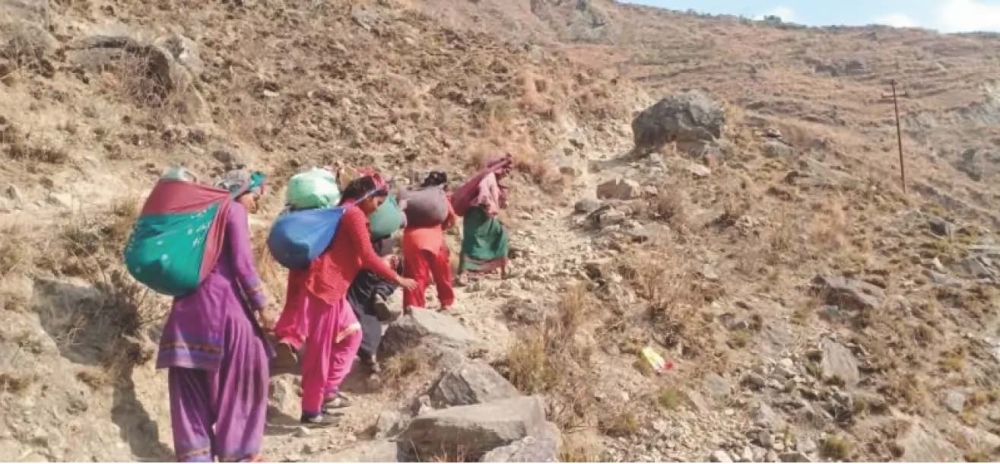Severe Winter Drought in Nepal Precisely Predicted by IAP FGOALS-f2 Model
Date:2021-03-15
Nepal media reported on March 5, 2020 that the country experienced severe drought in the past winter. The total rainfall dropped by 75% as compared with the normal average for the season. Shortage of rain had a major impact on irrigation, ruining vast rice crops and leaving thousands of farmers with little food or income. The wildfire raging in the mid-west Nepal lasted for two months, destroying around 700 hectares of forest cover.

Nepal received only 25 percent of normal rainfall this winter (Photo: Prakash Singh/THT)
The drought situation has been in accordance with the seasonal forecast released on December 3 2020 by the Multi-model-Integrated Subseasonal-to-Seasonal Prediction and Application in Disaster Risk Reduction (MISSPAD) project under the Alliance of International Science Organizations (ANSO). ANSO is a non-profit, non-governmental international scientific organization founded in 2018 by the Chinese Academy of Sciences and 36 other international science and education institutions from around the world.
The forecast was based on the FGOALS-f2_v1.3 Sub-seasonal to Seasonal Ensemble Prediction System developed at the Institute of Atmospheric Physics (IAP), Chinese Academy of Sciences.
"We anticipated that most part of the Nepal will receive less precipitation and high temperature than usual in this winter. That means regional drought events." recalled Prof. BAO Qing, IAP ANSO-MISSPAD key researcher. "The winter precipitation plays a very important role in supporting the winter production, so the decrease of precipitation by 20% to 50% indicates the decrease in winter production and this will affect the whole agriculture system."
The prediction information has been adopted by Nepal Department of Hydrology and Meteorology (DHM) under the Ministry of Energy, Water Resources and Irrigation in its Climate Outlook issued in December. The forecast stated that the winter would be "hot and dry" and suggested that the country be on alert of forest fires.
IAP FGOALS-f2 Sub-seasonal to Seasonal Ensemble Prediction System is the key part of ANSO-MISSPAD project. The system is a member of World Meteorological Observation Sub-seasonal to Seasonal Prediction Project and has entered operational application. ANSO-MISSPAD team has been committed to weather to climate seamless forecasting in countries along the Belt and Road Initiative.
Due to geographic, geological position, and the impact of climate change, Nepal is highly vulnerable to natural disasters. DHM has recently extended collaboration interest with IAP FGOALS-f2 team, expecting to deepen cooperation in research and talent training.
Media contact: Ms. LIN Zheng, jennylin@mail.iap.ac.cn
